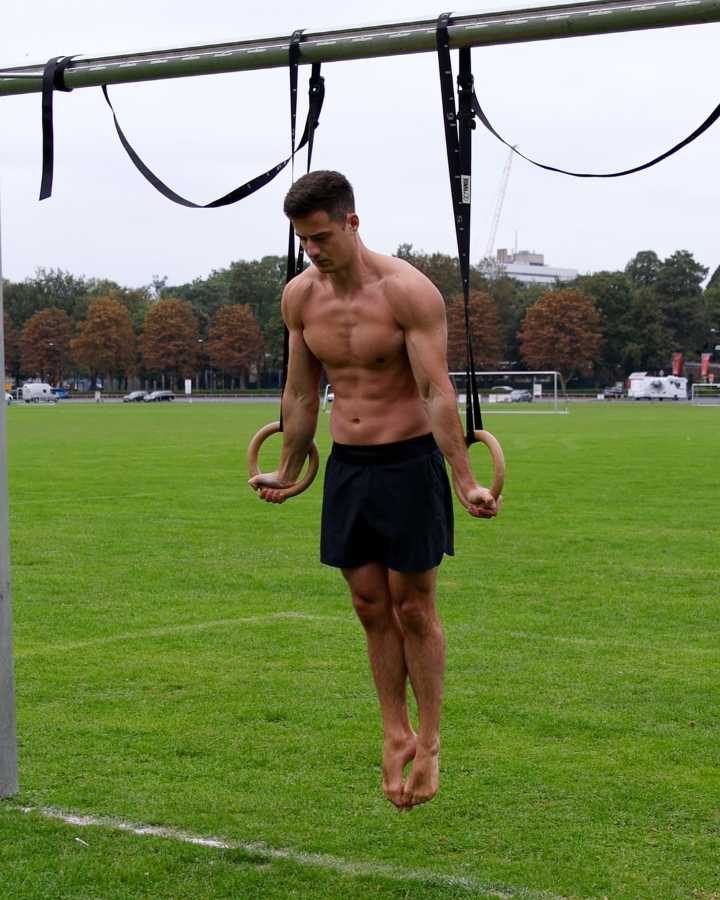Parallel Bars Support Hold
The support on the parallel bars is a classic exercise that primarily trains the chest, shoulder, and arm muscles while stabilizing the core. You support yourself with straight arms on the parallel bars, enhancing body tension and balance. This exercise is a foundation for advanced movements like Dips and L-Sit, as it builds the necessary upper body strength and control.
Necessary equipment

Parallel Bars Support Hold - the correct execution
- Start in the support position
- Stretch arms completely
- Keep shoulders low (depression)
- Consciously activate your torso and buttocks
The exercise Support Hold is intended to be used as a hypertrophy exercise.
Which muscles are trained by Support Hold?










Primary trained muscles for Support Hold
Triceps - The triceps brachii muscle is located at the back of your upper arm. It extends your arm at the elbow and also helps move the arm backward.
Front Delts - The front part of the deltoid muscle, also known as the anterior shoulder, is located at the front of the shoulder. It is primarily involved in the forward movement of the arm, such as lifting the arm forward. It also assists in the internal rotation of the arm. This muscle is engaged in activities that involve lifting objects in front of the body or pushing forward.
Secondary trained muscles for Support Hold
Chest - The pectoralis major muscle is the large muscle on your chest. It helps you bring your arm towards your body and rotate it inward.
Side Delts - The lateral part of the deltoid muscle, also known as the lateral shoulder, is located on the outside of the shoulder. It is the main muscle responsible for lifting the arm sideways. The lateral shoulder is particularly active when the arm is extended away from the body, such as during lateral raises or lifting objects to the side. It plays a key role in arm abduction and shoulder stabilization.
Alternative variants of Parallel Bars Support Hold:
Gym Rings Support Hold
The support hold on the gymnastics rings is a more challenging variation of support on the parallel bars because the unstable rings place additional demands on strength and stability. Compared to the support on the bars, ring support requires more strength in the shoulder, chest, and back muscles. It also serves as the foundation for advanced exercises like Ring-Dips and Ring-L-Sits.
Necessary equipment
Gym Rings Support Hold - the correct execution
- Jump into the support hold
- Arms are extended
- Palms face your body
- Rings are close to the body
- Keep shoulders low
- Head is in extension of the spine
- Core and glutes are tensed to the maximum
Gym Rings Support Hold RTO
The RTO (Rings Turned Out) support hold is an extremely demanding exercise on the rings, as it requires both strong muscle engagement and excellent coordination. Large muscles like the chest and back work at full capacity, while smaller muscles like the rotator cuff provide stability. The shoulders must be actively pulled back to prevent tipping forward, which demands a lot of strength and control. This combination makes the RTO support so challenging, but with consistent training, this exercise can be mastered.
Necessary equipment
Gym Rings Support Hold RTO - the correct execution
- Jump into the support hold
- Arms are extended
- Rings are close to the body
- Palms point forward
- Turn the palms only as far as you feel comfortable and safe with them
- Keep shoulders low
- Head is in extension of the spine
- Core and glutes are tensed to the maximum
Similar exercises to Support Hold
Support Hold on Gymnastic Rings
The Support Hold on the gymnastic rings engages the entire upper body, especially the chest, back, and shoulders. Due to the instability of the rings, it requires more strength and body tension than the Parallel Bars Support Hold.
According to this study, muscle activity in the chest and back muscles is higher on the rings, while the Parallel Bars Support Hold places more demand on the trapezius muscle.
This could also be interesting
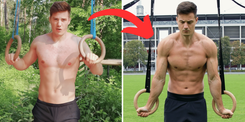
Calisthenics Body Transformation – How to Build a Strong, Lean, and Athletic Physique
Transform your body with Calisthenics! Build muscle, burn fat & achieve a shredded physique with bodyweight training. See real before & after results!

The Best Fitness Apps in 2025: Our Top 10 Recommendations
Don’t miss the best fitness apps of 2025: surprising favorites, free options, and perfect tools for your workouts. Find the ideal app today!
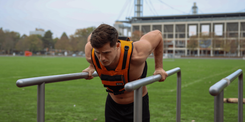
Complete Calisthenics Skills List – 40+ Exercises from Beginner to Pro
Which calisthenics skills should you learn first? And which ones will really help you progress? In this article, you’ll find a complete list of over 40 exercises – from the very basics to the toughest moves for professionals. Each exercise comes with instructions, so you can immediately integrate them into your training.
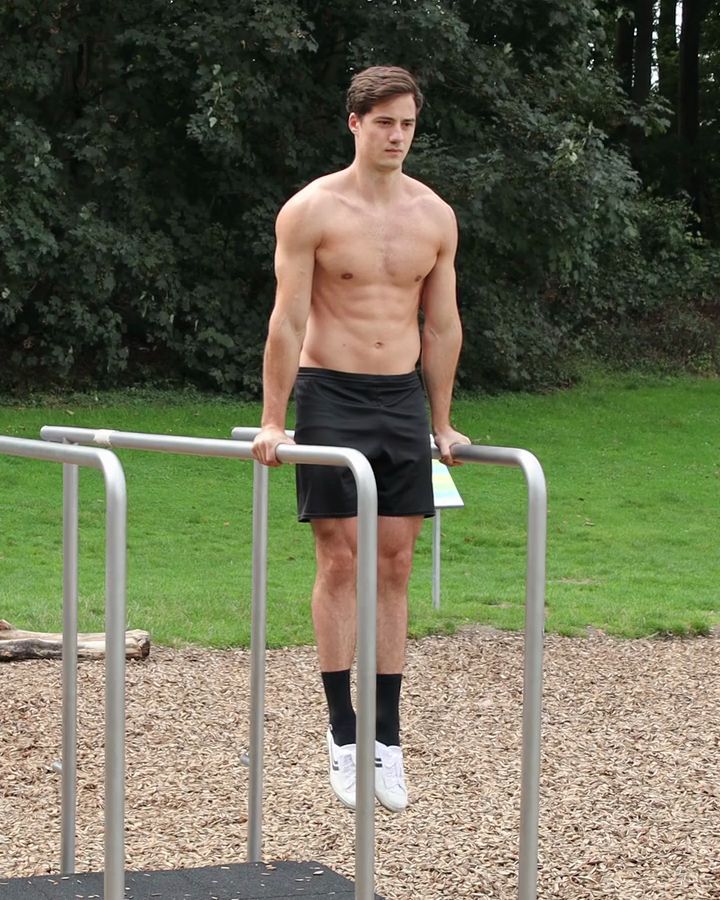
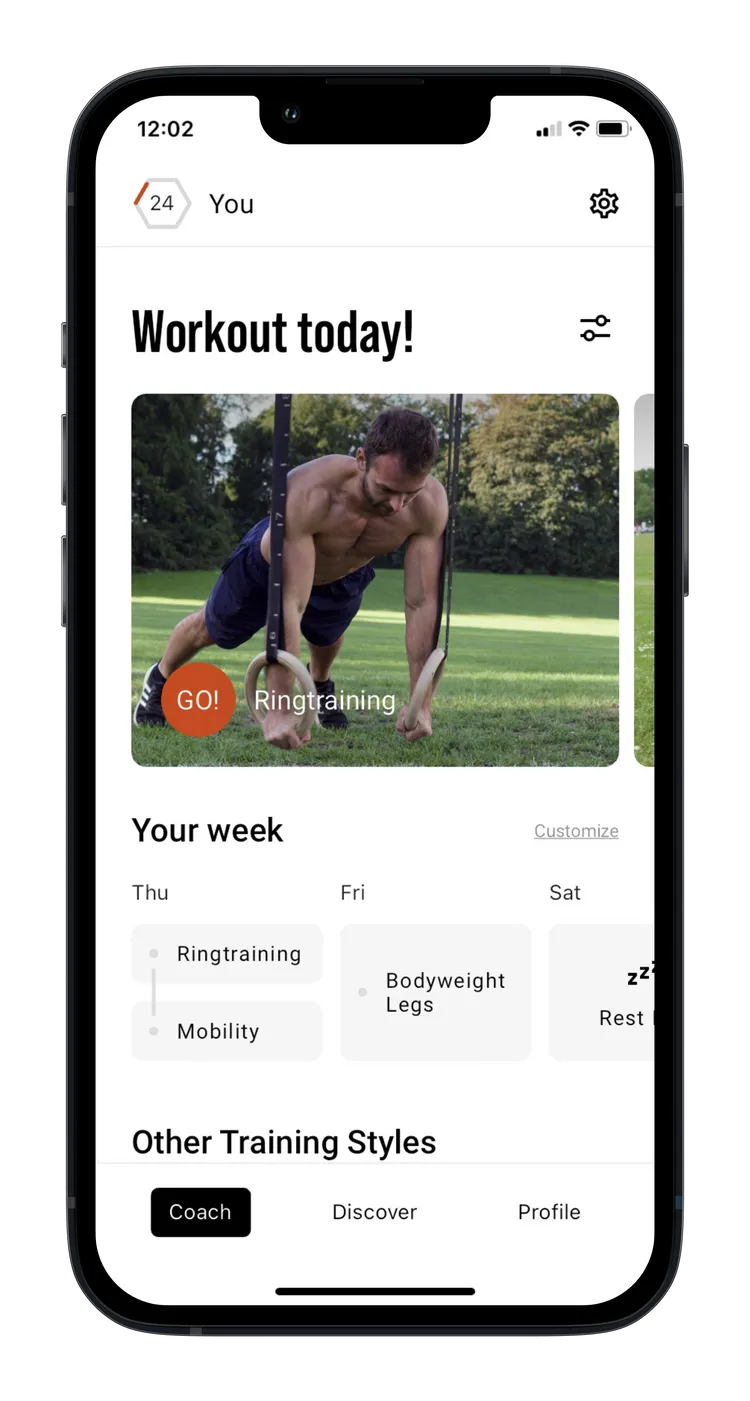

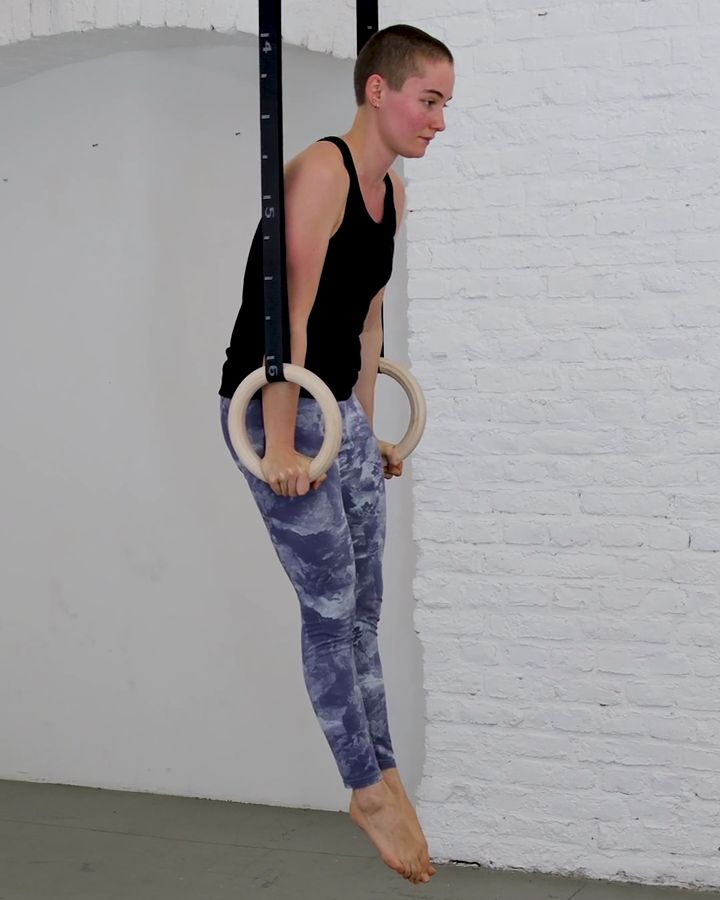
~e5724973d14549c23ea8a586b5736b36.png?alt=media)
